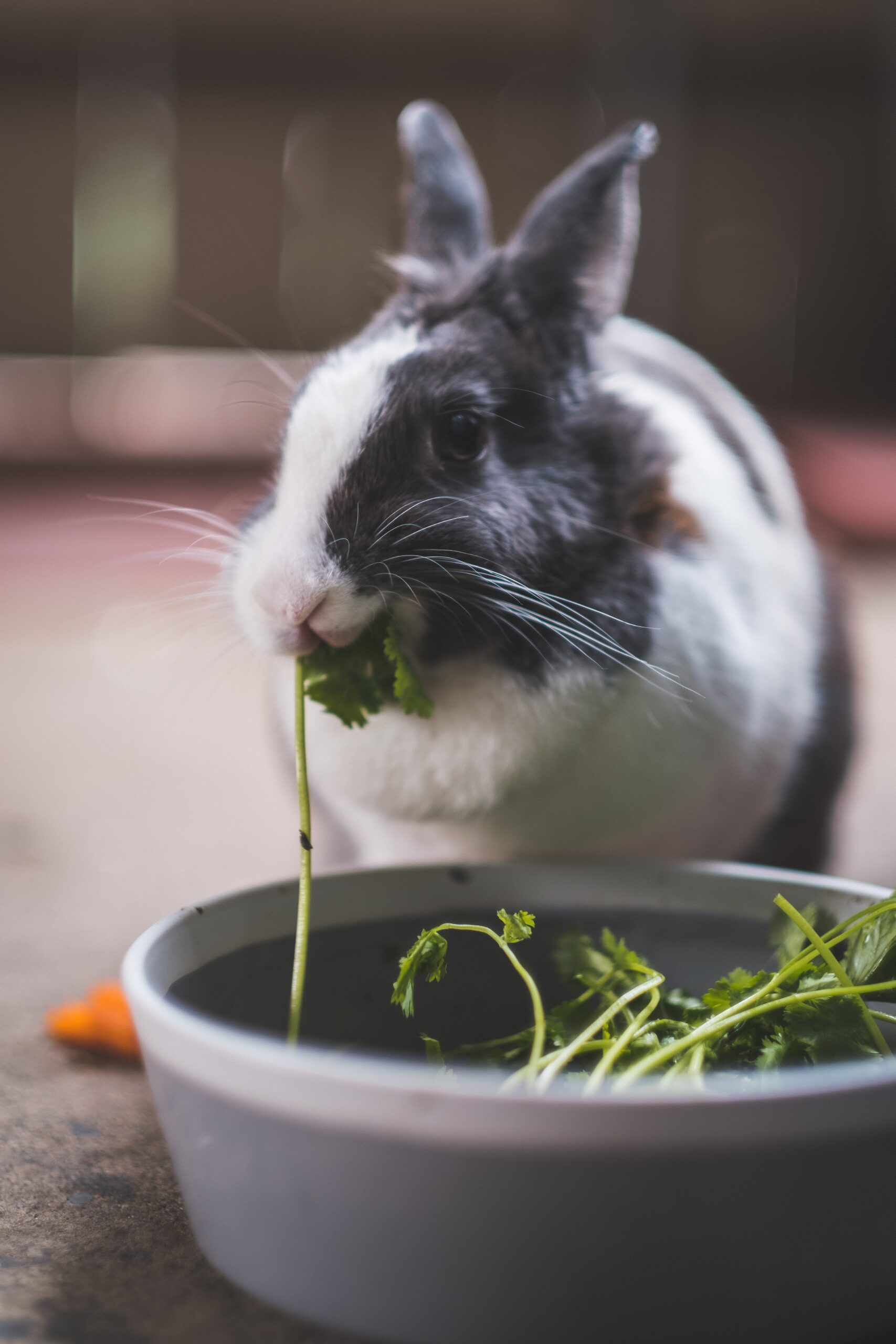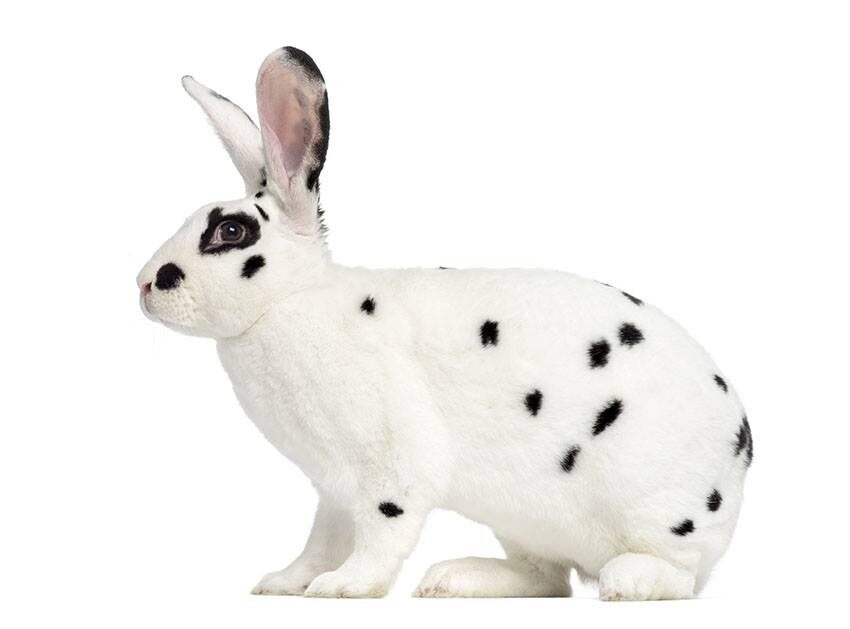Last Updated on June 12, 2023 by Admin
Bunnies are herbivores by nature, and a proper rabbit diet is usually essential if you want to increase their lifespan. So what does a proper rabbit diet comprise? In short, it should contain hay, vegetables, fruits, pellets, and a freshwater supply. In other words, this balanced diet essentially provides your pet with all the nutrients needed for their growth and development.

The Basic rabbit nutrition
Hay
One of the most nutritious diets a rabbit can have is one rich in fiber. Rabbits are natural grazers, who love consuming grass hay hence making it essential to feed them fiber while in captivity. Below are some of the fiber-rich foods to have on your rabbits’ menu.
- Timothy
- Bermuda
- oat
- Mixed orchid grass
- Brome
Green vegetables
Giving your rabbits fresh green leafy vegetables is also good for their health. When feeding them, ensure that the vegetables are rot-free and clean. For a proper rabbit diet, always try feeding them at least three different types of fresh vegetables for a single 3-pound rabbit. Below are some of the green vegetable categories you should select to be on your bunny’s menu.
- Herbs such as mint, parsley, basil, and chicory
- Kale
- celery
- Brussels sprouts or broccoli
- Romaine lettuce
- Bok choy
- Green peppers
- The leafy parts of spinach, carrots, dandelion, beets, and radish
- clover
- Watercress
Pellets
Another rich fiber meal for your pet rabbit is pellets, more precisely timothy ones with over 20% fiber content. It’s advisable to avoid purchasing pellets in bulk as these fiber meals usually lose their nutritional value with time.
If you’re planning on purchasing pellets, always buy fresh ones, and also, while at it, check on the manufacturing date too. Lastly, the quantity you feed your rabbit usually depends on the rabbit’s age, as we have illustrated below.
- Rabbits from one to three months should consume pellets in moderation, starting from the 4th week despite them still suckling until the 7th week.
- Four to seven-month-old rabbits should be fed with unlimited pellets.
- Owners should give their Eight to twelve-month-old rabbits weighing six pounds pellets half a cup each.
- You should provide over one-year-old rabbits that weigh 6 pounds with hay, a limited amount of greens, and clean water.
Fruits
Introducing fruits to your rabbit diet is another great way of keeping them in great shape and health. Fruits usually fall into the snack category, and hence bunnies should consume them moderately, especially when it comes to sugary ones. Always ensure that you wash the fruits and peel any seeds available before feeding your pet.
Water
Water is life, they say, it’s therefore essential to have fresh water available for your pet rabbits 24/7. Rabbits tend to drink plenty of water, especially during summer, or be active during the day. Place the water in a clean bowl strategically placed inside your bunny’s hutch. If possible, use purified bottled water instead of tap water, which might contain chemicals that might be harmful to your rabbit.
Rabbit feed tips
- When purchasing hay, make sure that it’s fresh. Fresh hay is always dry and mold-free, and also you can always tell from the distinctive smell it has.
- When purchasing your pet’s feed, never buy more than two months’ supply. When it comes to storing your rabbits feed, ensure that it’s in a dry area away from direct sunlight. Lastly, avoid using airtight containers or bags for storage as it may cause molds to develop.
- Hay usually comes in two categories, namely, the first cut and the second cut. The former is usually more nutritious and coarse, although some rabbits don’t enjoy it that much. On the other hand, the second cut is less nutritious and finer. It also provides your bunny with fiber and can act as an alternative for the first cut.
- In case you’re planning to buy hay cubes, ensure that you substitute your bunny’s diet with high-fiber pellets too.
- Hay can be found in pet stores, feed stores, and online purchase and delivery services.
- Avoid purchasing rabbit food that’s high in protein as it might interfere with your bunny’s over health.
- Naturally feeding bunnies is also another effective method. You can always go to an outdoor garden that allows your bunnies to graze on various edible plants. A garden will also provide your bunnies with sufficient space for playing and also exercising.
Pet rabbit Obesity
Rabbits becoming overweight is usually a common occurrence. A chubby bunny mainly has a puffy chest and body. Lack of exercise and overfeeding is usually the main cause of rabbit obesity. It is, therefore, essential to ensure that your bunny is physically active.
When you notice your bunny is slightly overweight, start reducing its pellets from 1/8 per cup to ¼ per cup. Also, instead of giving them fruit as treats, give them greens.
Lastly, never feed your overweight bunnies alfalfa as it contains a high amount of proteins; instead, put them on a hay diet.
Introducing a new diet: What you should know
Although having a balanced diet is fundamental for your rabbits’ overall health, it is worth mentioning that they usually have a sensitive digestive system. It is therefore important to monitor your pets after feeding them new foodstuff. Some rabbits experience diarrhea or gastrointestinal problems.
Introducing a new rabbit diet can lead to stomach upsets that trigger intestinal bacteria to react negatively. Therefore, it’s recommendable to give your pets small quantities of new food and monitor their stool at least for a week to ensure that their digestive system is functioning normally.
Harmful diet for your Rabbits
Rabbits are pets that usually have sensitive stomachs. Therefore, it is advisable to feed them with fresh foodstuffs in moderation and ensure you have a constant supply of clean water, as previously mentioned. On the other hand, avoid feeding your pet bunnies these foodstuffs as they usually tend to be harmful to their health in general.
- Corn
- Beans, cereals, bread, oats, and grains
- Potatoes or peas
- Cat or dog food
- Seeds and nuts
- Foods rich in starch, carbohydrates, or fat
- Candy, refined sugar, chocolate, etc.
Our posts have affiliate links that enable us to earn a small commission if you purchase any product at no extra cost; thanks.
